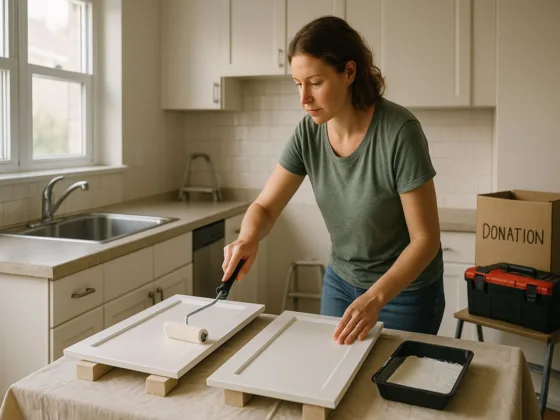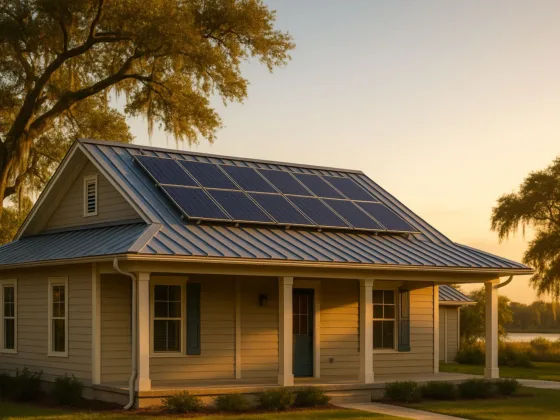Table of Contents Show
Human beings have changed a lot over the last 200,000 years. Society has evolved at an alarming rate, but one thing about people has remained the same – we need natural light. Lots of it.
How to Make the Most of Natural Light in Your Home
The best place to start is at home, but if your property suffers from a lack of daylight, how can you go about improving things? Here’s how to make the most of natural light in your home:

Why is Natural Light Important?
Natural light is something that a lot of us take for granted. While some of us are fortunate enough to spend a lot of time in daylight, others – particularly those who work in poorly lit offices – don’t get as much as we should. What many of us don’t realise is how important it is for us.
There’s a lot of complicated, detailed science behind this, but basically, natural light makes us feel better. There’s plenty of evidence for the benefits of natural light, and it comes down to the fact that our bodies and minds are biologically designed to function better when we get lots of daylight. It makes us more productive, it puts us in a better mood, and it’s important for our health.
With this in mind, it’s easy to see the appeal of making the most of natural light in the home. Unfortunately, for a lot of us, our homes aren’t as bright as we’d like them to be. We rely on harsh artificial lights a lot of the time, and we don’t take active steps to improve how much daylight our interior spaces provide.
With the benefits to our wellbeing in mind, along with the fact that natural light is one of the most important things people look for when buying a new property, making the most of daylight in your home is one of the best decisions you can make. There are all kinds of changes you can make, but a few things are particularly effective:
Figure Out What to Adjust
Before grabbing a hammer and engaging in some aggressive DIY, it’s crucial that you take a bit of time to really understand the lighting situation in your property. This isn’t something that many of us might have thought about before (aside from changing the odd light bulb, or grumbling about it being ‘so dark in here…’), but it’s a vital first step.
Spend a bit of time in each space of your home, and work out which rooms and areas do have enough natural light, and which don’t. For rooms that don’t have windows, this will be pretty simple, but for other spaces, it requires a bit of thought.
Turn all of the lights of during the day, throw open the curtains, and pick up your detective hat. Break large rooms or open spaces down into sections, and work out which sections are the darkest, and why.
This should give you a slightly more in depth understanding of which sources of light are currently providing the most benefit, as well as which aren’t making as much of a difference. Taking the time to figure this out will allow you to make informed choices as to which solutions will be the most effective.
Must Read:
Include Some Reflective Surfaces
One of the best ways to improve the effect of natural light on your property is to maximise the impact of the daylight that’s already present. A great step, and one that’s relatively simple to implement, is to include plenty of reflective surfaces to help the sunlight get to those hard-to-reach spots you’ve identified as in desperate need of brightening up.
The most effective tool in achieving this is the mirror. Positioning mirrors in carefully chosen spots on your walls can increase the amount of daylight in your interior spaces significantly via reflection. This doesn’t have to be at odds with your interior decoration either, as you’ll be able to pick a mirror that fits in with your chosen style.
Other things like polished brass or gold doorknobs, silver surfaces (e.g. picture frames), and metal lamps can all add to the effect, creating a kind of ‘cascade’, in which daylight is bounced around the room instead of falling flat. Even a polished floor surface such as wood or stone can make a big difference, and the overall effect is far greater than the sum of its parts.
Make Sure Windows Aren’t Obscured
It might seem fairly obvious, but to make sure that you aren’t scuppering your chances for a bright interior space before the light even makes it into your home, ensure your windows and sources of sunlight aren’t obscured.
Heavy drapes, curtains, and other fabrics might look pleasant but can actually prevent your windows from working at maximum efficiency. You don’t necessarily need to get rid of them, but make sure they can be pulled right back.
Things outside the home can get in the way too, particularly trees and other foliage that are close to the window in question. If you own the land on which said trees and plants are rooted, then try to regularly keep this trimmed back. If they belong to a neighbour, explain the issue and see if they wouldn’t mind doing the same.
Possibly the most basic step – but one that can make a pretty amazing difference – is simply to clean windows regularly. All you need is a sponge and some warm soapy water, and you can give an instant boost to the natural light in your home.
Choose a Colour Scheme that Complements Light
If your home is lacking in daylight, then a dark colour scheme can make things even worse. Dark colours actively absorb light, and when it comes to making the most of natural light, choosing a colour and decoration scheme that’s light and bright in itself can make a big difference.
Whites and creams are a great choice for everything from soft furnishings to walls and ceilings, as their plain nature can act as a ‘blank canvas’, complementing darker features such as dark wood furniture. Other colours can work too, but if you’re trying to maximise natural light, it’s best not to go for too many dark or rich colours.
It’s worth noting that if they’re selected to provide contrast, dark colours can actually enhance how bright your home feels. If you’re trying to make a room or space feel particularly bright, then decorating a smaller, adjacent room in a dark, cosy way can highlight just how bright the other parts of your home feel.
Use Artificial Lighting Intelligently
While it would be nice to live purely by the sun, waking as it rises and sleeping as it sets, modern life doesn’t really make this possible. Artificial light just isn’t the same as daylight, and it can be all too easy to simply opt for electric lighting as a solution to a dark property.
Unfortunately, it doesn’t offer any of the benefits that daylight does – and actually goes some way to hamper them. If you’re careful in the way you use artificial lighting in your home, however, it can actually enhance the effects of natural light.
For properties with few windows, you’ll inevitably need to make up for the lack of light with an artificial replacement. The key to ensuring that your artificial lighting doesn’t inhibit or counteract the effects of any daylight is all about striking a balance.
Place light fixtures including ceiling lights, lamps, and wall lights in specific places where natural light is lacking, in order to fill in the gaps. In other words, don’t simply take the attitude that it’s too dark, ergo we should light up the whole room. Similarly, try to select hues and levels of brightness that fit together well with natural light. Cool colours that aren’t too harsh can work particularly well.
Let More Light In
While all of the above strategies can be very effective, sometimes the only way to really make the most of natural light in a property is to let more in. This can involve small renovations, but sometimes adding brand new installations is the only viable answer.
Including interior and exterior glass doors, glazed panels instead of opaque dividers, and crystal clear panes instead of translucent ones can be a great start. Even making some adjustments to the windows and other glass features can make a difference. Choosing thinner and less obstructive frames and sills can be a relatively straightforward way to improve the presence of sunlight.
Another alternative to expensive new windows or doors is the ‘sun tube’ – a tubular daylight solution that involves adding a tube (similar to a ventilation pipe) with a reflective coating inside. This ricochets daylight down into an opening that sits above an interior space and is an increasingly popular choice, not to mention novel.
The biggest benefit of these devices is that, unlike a vertical window, they bring daylight in from above. Installations like these are some of the most effective, and if you’re looking for home renovations to brighten up your property, then a skylight is one of the best solutions (as they aren’t inhibited by things like trees, and receive sunlight consistently throughout the day).
Final Advice
In our busy modern lives, it’s all too easy not to get enough natural light on a regular basis, but when our homes are working against us, it’s important to stop and reassess what changes we can make.
Changes to any property will depend on budget, taste, and time, but making the most of natural light in your property can help you reap huge rewards in both the way your home looks and feels and your overall health and wellbeing.
It’s a clear choice and not something to be taken lightly. The steps mentioned above are a great place to start, but every home is different, and as with all home improvement projects – the journey is just as enjoyable as the destination. Take some time to ask yourself whether some changes might help you make the most of natural light in your home, and start planning!










1 comment
Your post is very unique and reliable information for all readers to write more on the same topic and share with us your info…Thanks